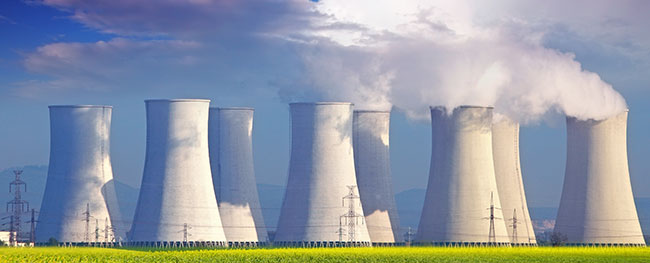
Mar 2, 2020
Blog Energy & Sustainability On The Future Of Nuclear Reactor Designs
History of Gen IV Reactors
The concept of Gen IV reactors was developed by the Gen IV International Forum (GIF) with the goals of sustainability, economics, safety and proliferation resistance.
In 2002, GIF selected six types, from nearly 100 concepts, as Gen IV fission reactor systems, including:
Current Status of Gen IV Reactor Construction
GIF divides the development of the Gen IV reactors into three phases:
The construction of commercial Gen IV reactors, which is slated to begin around 2030, will create large markets for various industries, including power supply, metals, alloys and ceramics.
Even before the start of construction, the R&D for the Gen IV reactors will bring substantial investment (many billions) as well as increase the sales of various types of advanced materials.
At the same time, the development of new formulas and manufacturing methods will improve the performance of those advanced materials in tough environments, thus helping the materials extend their use in new applications.
Gen IV reactors use cladding materials that meet the requirements for surface roughness, apparent ductility, level of leak tightness, compatibility with coolants such as helium and the anticipated irradiation conditions.
Currently, several types of low-swelling ferrite-martensitic steels are being tested as the fuel cladding in Gen IV reactors such as LFR, GFR and VHTR. For example, under the Advanced Fuel (AF) section of the three Project Arrangements (PAs) by the GIF for SFR projects, austenitic steel and martensitic steel are researched for the use as the cladding/wrapper materials of LFR. At the same time, oxide-dispersion-strengthened (ODS) steel is considered as an improved edition for future development.
Market Potential for Gen IV Reactors
There were global efforts to increase the use of low-carbon energy in the past decades to meet the growing demand for power generation while tackling the problems of greenhouse gas emission and climate change. But those efforts failed to achieve the goal of greenhouse gas reduction because the energy demand grew much faster than the supply of low-carbon energy.
The past decade’s experience shows that if nuclear power is excluded from contributing to the needed increase in global power capacity, the world will be unable to achieve stated greenhouse gas reduction goals.
While it’s too early to tell the real cost of commercialized Gen IV reactors, the market could be worth about $1.3 billion in optimistic conditions.
For more intel on this topic, download a free chapter of our report, “Generation IV Reactors and Advanced Materials: Emerging Opportunities.”

Electrical switches—devices that control the flow of electricity—are the backbon...

As the world accelerates toward net-zero emissions, hydrogen, and ammonia have e...

Hydrogen technology is widely used across industries like glass, fertilizer, met...

We are your trusted research partner, providing actionable insights and custom consulting across life sciences, advanced materials, and technology. Allow BCC Research to nurture your smartest business decisions today, tomorrow, and beyond.
Contact UsBCC Research provides objective, unbiased measurement and assessment of market opportunities with detailed market research reports. Our experienced industry analysts assess growth opportunities, market sizing, technologies, applications, supply chains and companies with the singular goal of helping you make informed business decisions, free of noise and hype.